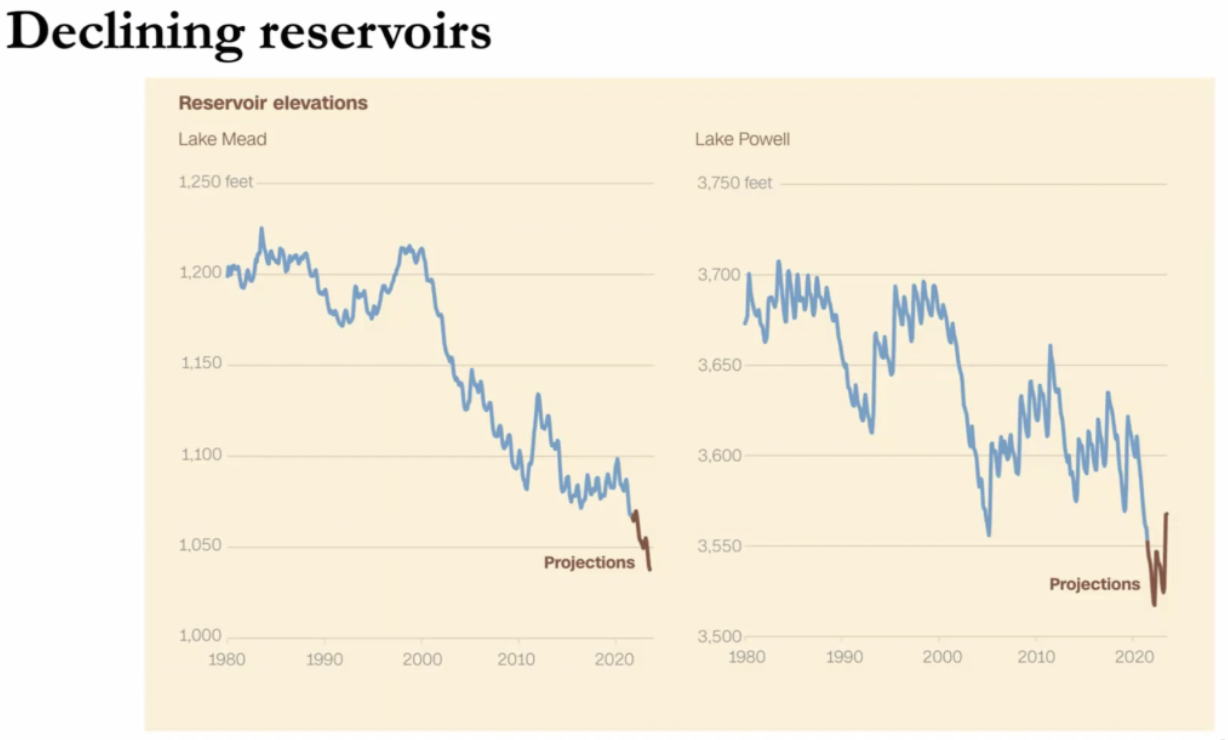Water Issues in the Colorado River Basin and the Interior West
Image Credit: Luke Runyon, Keynote Presentation
"The Colorado River Basin is in dire straits currently. There is just not enough water to go around for all of the uses we have tasked it with doing...watering giant cities, growing crops in Southern California and Arizona," said Luke Runyon, journalist and reporter at NPR, who covers environmental and water-related issues in the Colorado River Basin area.
The Colorado River Basin has been under great threat recently as the impacts of global warming are directly effecting the water levels of the river(s) in the area, and ultimately the people reliant on that water.
Mitch Tobin, director of The Water Desk, a publication facilitated through the University of Colorado Boulder, also reports on water-driven environmental issues in the Colorado River Basin and in other Western areas.
He said "There are a lot of misconceptions surrounding water. Water touches everything: agriculture, infrastructure, environmental...the topic of water never gets boring."
The work these two have done, both individually and together, has helped illustrate how global warming and climate change have impacted the western part of the United States' access to reliable water sources. States like Colorado, Arizona, New Mexico and California and the people that live within them, are all directly impacted by the lack of usable water in the region.
A study from Oregon State University said Arizona, New Mexico, (and the remaining River Basin states) get roughly 4-12 inches of precipitation per year. This is surely not enough natural precipitation to sustain life at a rate necessary for today's American society.
Tobin said "our demands have to shrink in order to match that declining supply [of water] we are seeing in the river."
Rivers have begun drying up and, as a result, dead zones are forming faster than ever before causing losses of biodiversity, natural habitats, water resources, and animal life.
Bodies of water like Lake Powell, Lake Mead, the Colorado River, and the Snake River have been receding at unprecedented rates due to humans' increased demand for fresh water - the possibility of dead zones has never been more real than right now.
Runyon continued, "we have created a tremendous amount of demand for water in an area where there is just not a lot of water to go around..."
Fresh drinking water has become an issue for many and a problem that needs attention quickly due to the lack of natural rainfall the west receives. Unfortunately, it seems undoable to shrink the demand for water as it is a commodity that people are always pursuing. Hopefully, the future is more promising than models predict.
Sources:
Tobin, Mitch. Water Desk, CU Boulder. Interview.
Runyon, Luke. NPR. Interview.
Runyon, Luke. Image Credit from Keynote Presentation
